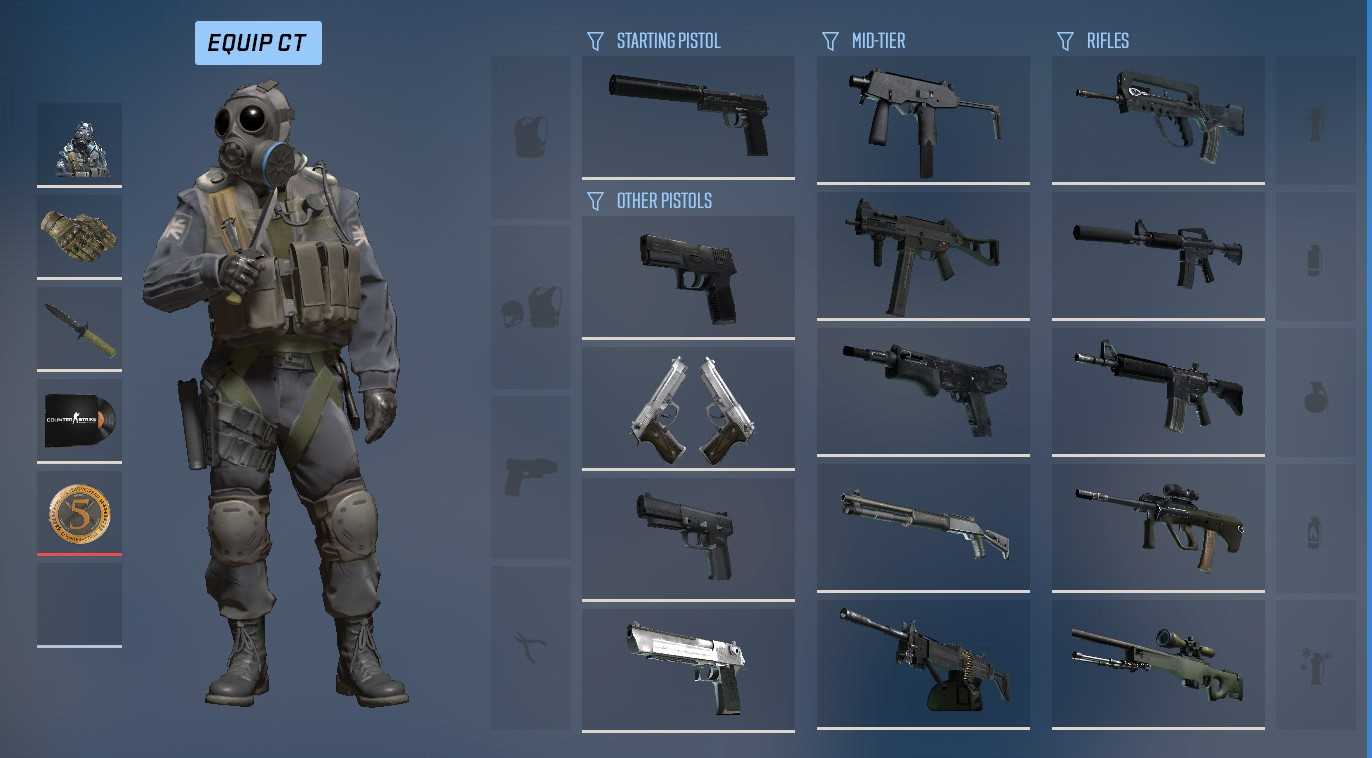Boat Drops: Your Portal to Aquatic Adventures
Explore the world of boating with tips, news, and insights.
SMG Shenanigans: Why CS2 Players Can't Get Enough of Submachine Guns
Dive into the buzz around CS2 submachine guns! Discover why players are obsessed and how these weapons redefine the game.
Top 5 Reasons Submachine Guns Dominate in CS2 Gameplay
In the fast-paced world of CS2 gameplay, submachine guns (SMGs) have emerged as one of the top choices among players. One of the foremost reasons is their high mobility, which allows players to swiftly navigate the battlefield while maintaining an offensive stance. This agility is crucial in dynamic environments, where engagements can occur at a moment's notice. With their lightweight design, SMGs enable players to strafe and dodge enemy fire more effectively than heavier weapons, giving them a tactical edge.
Another significant advantage of submachine guns in CS2 is their cost-effectiveness. Priced lower than rifles, SMGs provide an excellent return on investment, making them accessible during eco rounds or for players looking to save money for later in the match. The combination of affordability and decent firepower allows teams to maintain pressure on opponents without compromising their economy. Whether it's the MP9 or the P90, these weapons deliver a potent blend of rate of fire and accuracy, ensuring that players can hold their ground in close-quarters combat.

Counter-Strike is a highly popular first-person shooter game that pits teams of terrorists against counter-terrorists in various objective-based game modes. Players can enhance their experience with various CS2 Weapon Skins that personalize their in-game weapons and add a unique flair to their gameplay. With a strong competitive scene, it remains a favorite among esports enthusiasts.
The Evolution of SMGs in CS2: What Makes Them So Popular?
The evolution of SMGs in CS2 has been a fascinating journey, reflecting both technological advancements and shifts in gameplay strategies. SMGs, or submachine guns, have consistently provided players with a blend of mobility and firepower, making them an essential part of any arsenal. Unlike their heavier counterparts, SMGs offer a faster rate of fire and better handling, which allows players to engage in close-quarters combat effectively. As the game has progressed, developers have tweaked these weapons' characteristics to keep them balanced, ensuring they remain viable options for players who prefer a dynamic style of play.
One of the reasons SMGs' popularity has soared in CS2 is their adaptability across various maps and situations. For instance, on smaller maps, the rapid-fire capability of SMGs allows players to outmaneuver and overwhelm opponents quickly. Furthermore, the introduction of unique skins and customization options has made these weapons visually appealing, attracting players' attention and encouraging experimentation. The continuous updates and patch notes often highlight the importance of SMGs, solidifying their place in the meta and ensuring they remain a staple choice for both casual and competitive players.
Are Submachine Guns the Best Choice for Competitive Players in CS2?
In the ever-evolving landscape of CS2, submachine guns (SMGs) have carved out a significant niche for competitive players. These weapons offer a unique blend of mobility, rapid-fire capability, and close-quarters effectiveness that can be advantageous in fast-paced matches. The lower cost of SMGs compared to rifles allows players to allocate their resources more flexibly, especially in eco rounds where saving can lead to a stronger investment in future rounds. This financial aspect, combined with the ability to secure quick kills in tight spaces, makes SMGs a viable choice for many strategies.
However, the decision to use submachine guns ultimately hinges on a player's playstyle and team dynamics. While SMGs excel in close-quarters combat, they may falter at longer ranges where rifles dominate. Thus, it's crucial for players to assess their roles within the team and the specific maps being played. Incorporating SMGs into a broader weapon rotation can provide tactical flexibility, allowing players to adapt and surprise opponents. In conclusion, while SMGs can be the best choice for certain scenarios in CS2, their effectiveness largely depends on individual skill and situational context.